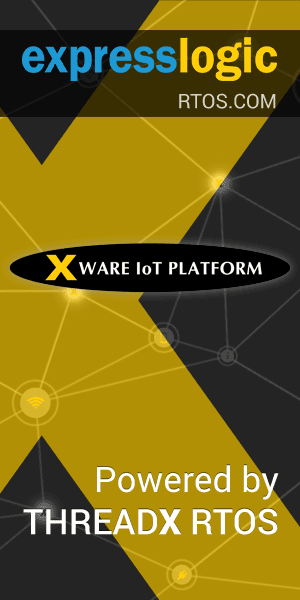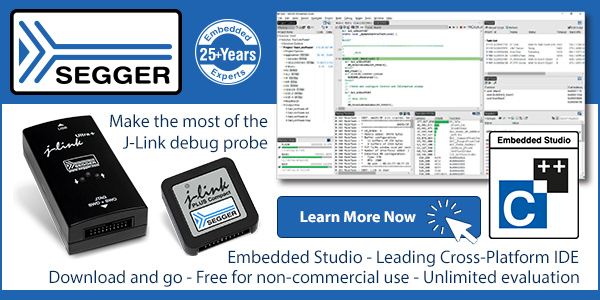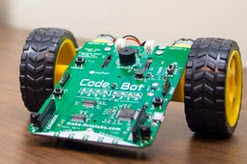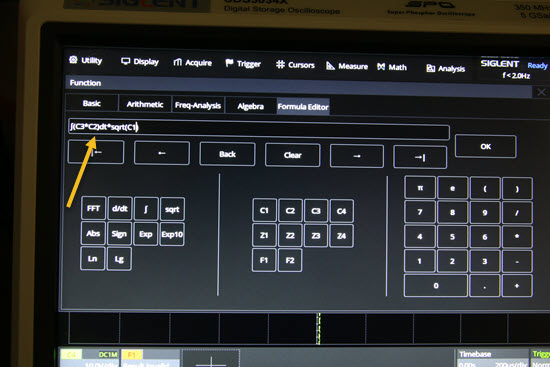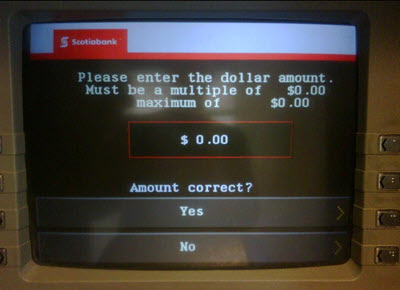|
||||
You may redistribute this newsletter for non-commercial purposes. For commercial use contact jack@ganssle.com. To subscribe or unsubscribe go here or drop Jack an email. |
||||
| Contents | ||||
| Editor's Notes | ||||
|
Jack's latest blog: Is the Future All Linux and Raspberry Pi? |
||||
| Quotes and Thoughts | ||||
We should continue to collect and analyze data on how, when, where and why people make software errors in order to find means to avoid people making these errors. Barry Boehm |
||||
| Tools and Tips | ||||
|
Please submit clever ideas or thoughts about tools, techniques and resources you love or hate. Here are the tool reviews submitted in the past. Sometimes we have very limited I/O for debugging. One approach I have used is to generate Morse code messages to a speaker. Here's a program that will do this. This site gives implementations in 62 languages; the C version is very clunky, but the Forth version is intriguing. A couple of years ago a reader wrote that he did this, but the beeping drove other engineers crazy! Max Maxfield has a 9 (!) part series on switch debouncing. Part 9 is here, and that page has links to the earlier parts as well. |
||||
| Freebies and Discounts | ||||
Firia Labs is donating one of their CodeBots (a Python-enabled robot with a host of sensors) for this month's giveaway.
Enter via this link. |
||||
| Design by Contract | ||||
Design by Contract (DbC) is an idea that I believe was first implemented in the Eiffel1 programming language. Ada-2012 included the notion. Essentially, the idea is the components of a program have contractually-governed relationships to each other. A function, for instance, can only accept parameters that meet certain constraints (e.g., code that computes a rocket's velocity might only accept positive values). DbC usually includes three types of contracts:
I've tried to torture C via macros and other convoluted processes into supporting DbC, without much success. Assertions are a poor-person's crude-DbC alternative, and I've written extensively about better ways of using those here. I recently stumbled across a nice writeup on using DbC in Ada. Recommended, even for C developers, as that page has wisdom worth pondering. 1. Eiffel is an object-oriented programming language that no one in the embedded industry uses. It is described in Betrand Meyer's Object Oriented Software Construction, which is probably the best book written about OO design. Though it teaches Eiffel most of the book's ideas scale directly to C++. Meyer is a brilliant writer. |
||||
| RTOS... or a State Machine? | ||||
Tony Garland responded to my comments in the last issue about using an RTOS:
Miro's book is indeed excellent. I did find it a bit heavy going at times, but worth the effort. |
||||
| The (Scope) New Math | ||||
Last year I was using an opto-interrupter to measure the speed of a rotating wheel. The pulses went to an oscilloscope, and by measuring their period I could derive RPM. It occurred to me that most scopes today can do some math, though that is limited to a handful of pre-defined operations. Wouldn't it be nice if the instrument could do any sort of math? That is, the user could type in custom formulas. Then one could observe things like RPM directly. I mentioned this to Siglent; they said they'd look into it. Of course I forgot all about it. Recently I upgraded the firmware in my Siglent SDS5034X and found that the MATH button operates normally, but a little clicking around brings up this screen:
That's right - the scope can accept many kinds of user-defined math functions. The middle array of soft-buttons select the source: channels 1 through 4 (C1-C4), zoomed subsets of those channels (Z1-Z4) and two user-defined functions. The buttons on the left enable common functions and the grouping on the right includes numbers and the basic arithmetic functions. In the formula bar (the arrow points to this) I've entered (∫(channel 3 times channel 2)) *√ (channel 1). The computation's result appears as another trace on the screen. As one moves the cursor a box displays the instantaneous value at the cursor position. Remember when we used to count divisions on the screen and convert those to volts or time? That's long gone. So too, it now seems, with figuring some function manually. |
||||
| Failure of the Week | ||||
|
||||
| This Week's Cool Product | ||||
Here's a gyro that's 10,000 times more accurate than the one in your mobile phone, but is only 10x more expensive. Though not available yet as a product, it's pretty amazing. This is a golden age of sensors. Note: This section is about something I personally find cool, interesting or important and want to pass along to readers. It is not influenced by vendors. |
||||
| Jobs! | ||||
Let me know if you’re hiring embedded engineers. No recruiters please, and I reserve the right to edit ads to fit the format and intent of this newsletter. Please keep it to 100 words. There is no charge for a job ad. |
||||
| Joke For The Week | ||||
These jokes are archived here.
|
||||
| About The Embedded Muse | ||||
The Embedded Muse is Jack Ganssle's newsletter. Send complaints, comments, and contributions to me at jack@ganssle.com. The Embedded Muse is supported by The Ganssle Group, whose mission is to help embedded folks get better products to market faster. |




